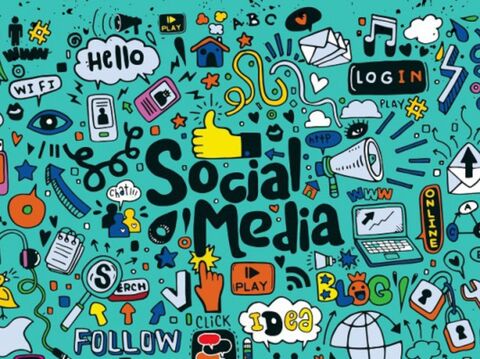Mastering Customer Lifecycle Management: All-Inclusive Guide

Customer Lifecycle Management (CLM) is vital for sustaining business growth and building long-term customer relationships.
Managing customer relationships involves understanding and nurturing your customers through every stage of their journey with your business.
This guide will break down CLM's meaning and its different stages, offering insights and strategies to help you maximise your relationships with customers.
What is Customer Lifecycle Management?
Customer Lifecycle Management (CLM) is all about tracking and improving every interaction a customer has with your business, from their first encounter to turning them into loyal repeat buyers and getting them to come back if they ever take a break.
The goal is to understand what your customers want at each stage of their journey and meet those needs, which helps you build stronger, more lasting relationships.
This not only makes customers happier but also keeps them coming back and boosts their overall value to your business.
5 Stages of Customer Lifecycle Management
Understanding the stages of customer lifecycle management is crucial for any business. Each stage presents challenges and opportunities to engage with customers.
Let's delve into these stages and see how they contribute to building strong customer relationships:
-
Acquisition
In the acquisition stage, potential customers first become aware of your brand. Making a strong impression here is crucial to attract their interest and set the stage for further interactions.
Here are some strategies that can help attract more customers:
-
Use of SEO Best Practices
Your website must appear high in search results when potential customers search for products or services similar to yours. You should ensure your website's content includes keywords people might use to find your business, improving your customer life cycle efforts.
-
Engagement Through Social Media Marketing
Social media marketing through Facebook, Instagram, and LinkedIn is a great way to interact with potential customers. You can use ads that target specific groups of people or posts that engage people by asking questions or sharing interesting facts.
-
Creation of Valuable Content Marketing
Providing useful content, such as blogs, videos, and infographics, helps address your audience's interests and problems. This content should be easy to understand and useful, which can make people want to learn more about your brand.
-
Investment in Paid Advertising
Pay-per-click (PPC) campaigns can quickly bring a wide audience to your site. Testing different ads can help you find the most effective messages and designs.
Here are some tools that can make these strategies more effective:
- CRM Systems like HubSpot and Salesforce
These systems help you keep track of all your potential customers. You can see who they are, their interest, and how they interact with your brand, all in one place.
- Google Analytics
This tool shows you how people find and use your website. It can tell you what they like and what they don’t. This data helps you make better decisions about improving your website, and analysing it refines your customer lifecycle management strategies.
-
Engagement
After attracting their attention, the next step is to keep potential customers interested. This stage is about building relationships and encouraging them to learn more about what you offer.
Here are some effective engagement strategies:
-
Offering Educational Resources like Webinars and E-books
These resources provide valuable information to help establish your brand as an expert. They should be easy to understand and full of interesting and useful information. These efforts enhance the consumer lifecycle.
-
Sending Regular Newsletters
Updating your audience with news, tips, and special offers keeps them connected to your brand. Make sure these newsletters are interesting and to the point.
-
Running Email Nurturing Campaigns
Personalised email marketing can guide potential customers through your sales process by providing the right information at the right time. These emails should be friendly and helpful, making the reader feel valued.
-
Using Customer Testimonials
Sharing stories from happy customers can make others feel more confident about choosing your brand. These testimonials should be honest and highlight how your brand has helped others.
These tools can enhance your engagement efforts:
- Email Campaign Tools like Mailchimp
Mailchimp[1] helps you design, send, and track emails. It makes managing email campaigns simple.
- Social Media Tools like Hootsuite
Hootsuite[2] lets you schedule posts, track social media engagement, and manage all your social media accounts in one place.
-
Conversion
Once people are engaged with your brand, the next goal is to encourage them to purchase. This stage is about turning interest into action.
Effective strategies for increasing conversions include:
-
Simplifying the Checkout Process
Make sure buying something from your website is as easy as possible. Fewer steps and clearer instructions can help prevent people from giving up halfway through.
-
Offering Multiple Payment Options
Giving customers different ways to pay can increase their likelihood of completing a purchase. Whether it’s credit cards, PayPal[3], or newer methods like Apple Pay, more options can mean more sales.
-
Creating Urgency with Time-Sensitive Offers
Limited-time discounts or special deals can encourage people to act quickly. These offers should be exciting and feel like genuine opportunities.
-
Ensuring Secure Payments
Use trusted services for your payment processes and clearly display security badges. This makes customers feel safe when buying from you.
Tools that can help with conversions include:
- eCommerce Platforms like Shopify
Shopify provides everything you need to create an online store. It’s easy to use and works well for businesses of all sizes.
- Payment Gateways like Stripe
Stripe handles online payments securely and integrates easily with many platforms, making it a versatile business choice.
-
Retention
After a customer makes a purchase, they focus on keeping them as a repeat customer. This stage is about maintaining interest and satisfaction.
Here are some key retention strategies:
-
Developing Loyalty Programs
Programs that reward repeat customers can encourage them to keep coming back. Points, discounts, and special members-only offers are all good rewards.
-
Providing Excellent Customer Support
Make sure customers can easily get help when they need it. Quick and helpful responses can make a big difference in how people feel about your brand.
-
Sending Personalised Communications
Use what you know about customers to tailor your messages to their interests. This can make them feel special and appreciated.
-
Asking for and Acting on Feedback
Regularly ask customers what they like and don’t like about your brand. Show that you care about their opinions by making changes based on their suggestions.
Tools that can improve retention include:
- Loyalty Platforms like LoyaltyLion
This software helps you create and manage loyalty programs that reward customers for their repeat business.
- Customer Service Platforms like Zendesk
Zendesk makes managing customer questions and problems easy, helping you provide excellent service.
-
Advocacy
The final stage in the customer lifecycle is turning happy customers into active promoters of your brand. This stage focuses on encouraging customers to spread the word to others.
Effective advocacy strategies include:
-
Encouraging User-Generated Content
Ask customers to share their own stories and pictures using your products. This content is powerful because it comes from real users, not just your brand.
-
Using Referral Programs
Give customers rewards for bringing new people to your brand. These rewards should be attractive enough to motivate customers to participate.
-
Offering Exclusive Perks for Loyal Customers
Special treats for your best customers can make them feel valued and encourage them to talk about your brand with others.
-
Building a Community
Create spaces, like online forums or social media groups, where customers can interact and share experiences. A strong community can lead to stronger loyalty and more advocates.
Tools to foster advocacy include:
- Referral Marketing Platforms like ReferralCandy
This tool helps you set up and manage a referral program that tracks referrals and rewards customers.
- Social Media Monitoring Tools like Brand24
Brand24 tracks what people are saying about your brand online. It helps you understand and manage your brand’s reputation.
How Customer Lifecycle Management (CLM) Works?
-
CLM is all about continuous learning. It’s about constantly gathering and analyzing customer data to improve experiences, personalize interactions, and fix any issues along the way.
-
To make sure the customer journey runs smoothly, teams across marketing, sales, customer support, and analytics need to work closely together.
-
Businesses also use metrics like customer lifetime value (CLV) to help shape things like targeted advertising, collect feedback, and keep improving their approach.
Customer Lifecycle Management Best Practices
To ensure success in managing customer relationships through the lifecycle, keep these best practices in mind:
-
Customer Segmentation
Know your audience well. Segment your customers by their interests, behaviours, and needs. This helps you target your messages and offers more effectively.
-
Data Collection and Analysis
Use tools to collect and analyse information about how customers interact with your brand. This information can help you make better decisions and improve your strategies.
-
Personalisation
Make your communications specific to the interests and needs of your customers. Personal touches can make customers feel special and improve their experience with your brand.
-
Multi-Channel Engagement
Reach out to your customers where they are. Whether email, social media, or text messages, use multiple channels to keep in touch.
-
Feedback Loops
Ask for and act on feedback from your customers regularly. This shows that you are committed to improving their experience.
Wrapping Up
Mastering Customer Lifecycle Management is about building and maintaining strong relationships with your customers. This happens at every stage of their journey with your brand, and a strong customer life cycle ensures long-term success.
Understanding the application lifecycle management process is key. It helps manage and improve each phase of the consumer lifecycle. With the right approach, customers feel appreciated. They are likelier to stick with your brand and recommend it to others. When managed well, this cycle creates loyal customers who support your brand.
Transform your customer lifecycle management with GrowthJockey. Our expert solutions help you effectively engage, convert, and retain customers!
FAQs Related to Customer Lifecycle Management
-
What's the difference between Customer Lifecycle Management and Customer Relationship Management?
Customer Lifecycle Management (CLM) looks after every stage of a customer's journey with a brand, from when they first learn about it to when they promote it. Customer Relationship Management (CRM) focuses on keeping and managing existing customers. CRM tools help organise and analyse customer data.
-
What problems do businesses face during the engagement stage?
It can be challenging to stay in touch consistently and share interesting content. Businesses need to send regular updates and personal messages to keep customers interested. Tools like email marketing can help a lot.
-
Why is customer feedback important in Customer Lifecycle Management?
Feedback helps improve products and services. It shows what needs to be better and makes customers feel valued. Using feedback well can make customers happier and more loyal. It also gives useful insights into what customers want and expect.
It also supports the application lifecycle management process. It provides insights into customer needs and expectations.
-
What are the main stages of the customer lifecycle?
Acquisition, Engagement, Conversion, Retention and Advocacy are the 5 main stages of customer lifecycle.
-
How can businesses effectively implement Customer Lifecycle Management?
- Define your ideal customer
- Map customer journey
- Unify and organize customer data
- Segment and personalize
- Integrate technology and automate processes
- Develop targeted content and communication
- Monitor, analyze, and continuously improve
- Foster cross-functional collaboration
Suggested Read: Best Examples of Customer Lifecycle Management
Sources








